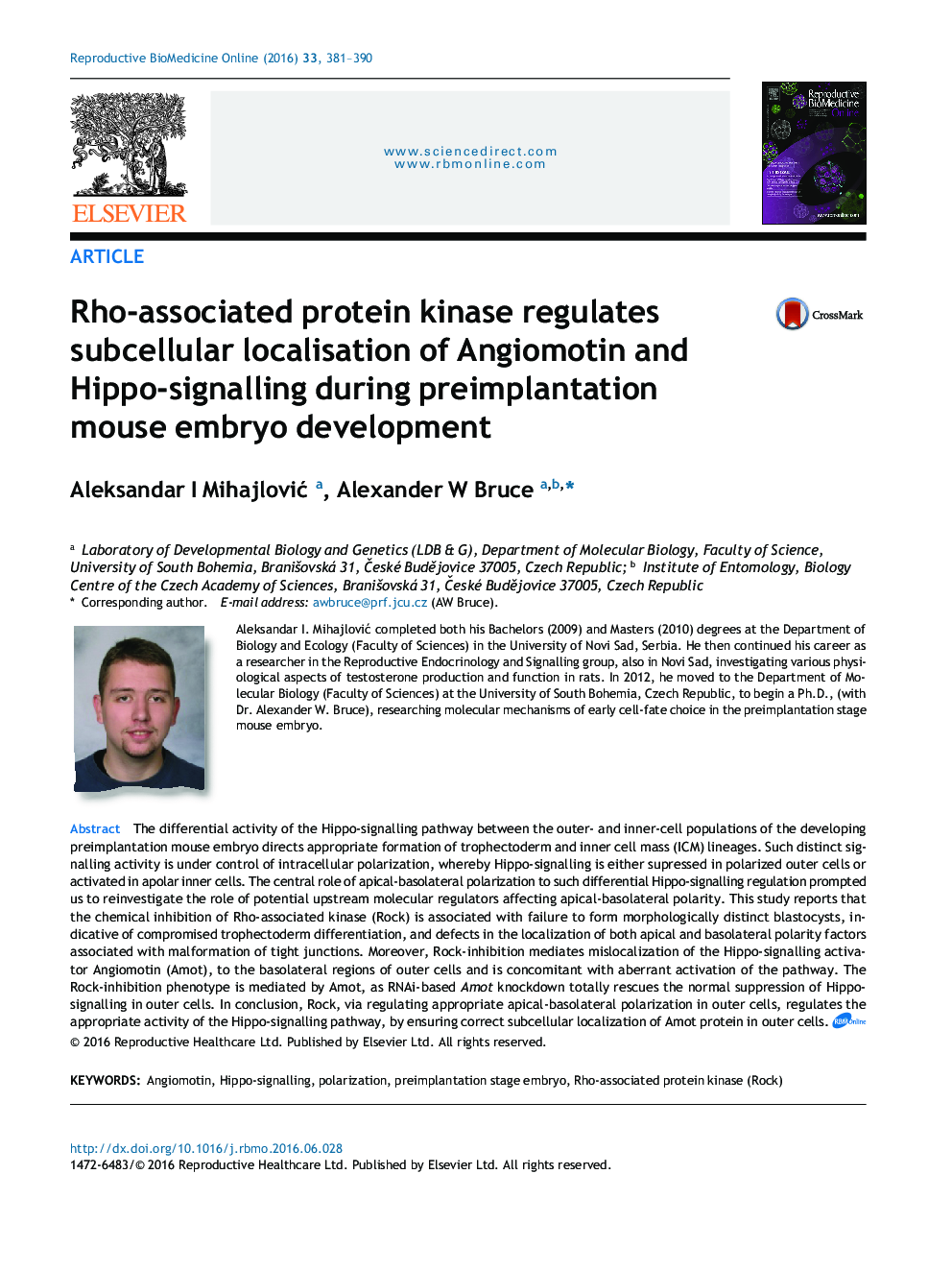| Article ID | Journal | Published Year | Pages | File Type |
|---|---|---|---|---|
| 3969931 | Reproductive BioMedicine Online | 2016 | 10 Pages |
•Optimised small chemical Rock-inhibition (RI) in preimplantation mouse embryos.•RI disrupts tight-junction formation and apical-basolateral intra-cellular polarisation.•RI causes ectopic outer-cell Hippo-signalling and mis-localised basolaterally enriched Amot•RNAi confirms Amot as sole mediator of RI derived Hippo-signalling defects•Rock, via regulating Amot localisation/function, ensures correct cell lineage gene expression
The differential activity of the Hippo-signalling pathway between the outer- and inner-cell populations of the developing preimplantation mouse embryo directs appropriate formation of trophectoderm and inner cell mass (ICM) lineages. Such distinct signalling activity is under control of intracellular polarization, whereby Hippo-signalling is either supressed in polarized outer cells or activated in apolar inner cells. The central role of apical-basolateral polarization to such differential Hippo-signalling regulation prompted us to reinvestigate the role of potential upstream molecular regulators affecting apical-basolateral polarity. This study reports that the chemical inhibition of Rho-associated kinase (Rock) is associated with failure to form morphologically distinct blastocysts, indicative of compromised trophectoderm differentiation, and defects in the localization of both apical and basolateral polarity factors associated with malformation of tight junctions. Moreover, Rock-inhibition mediates mislocalization of the Hippo-signalling activator Angiomotin (Amot), to the basolateral regions of outer cells and is concomitant with aberrant activation of the pathway. The Rock-inhibition phenotype is mediated by Amot, as RNAi-based Amot knockdown totally rescues the normal suppression of Hippo-signalling in outer cells. In conclusion, Rock, via regulating appropriate apical-basolateral polarization in outer cells, regulates the appropriate activity of the Hippo-signalling pathway, by ensuring correct subcellular localization of Amot protein in outer cells.
